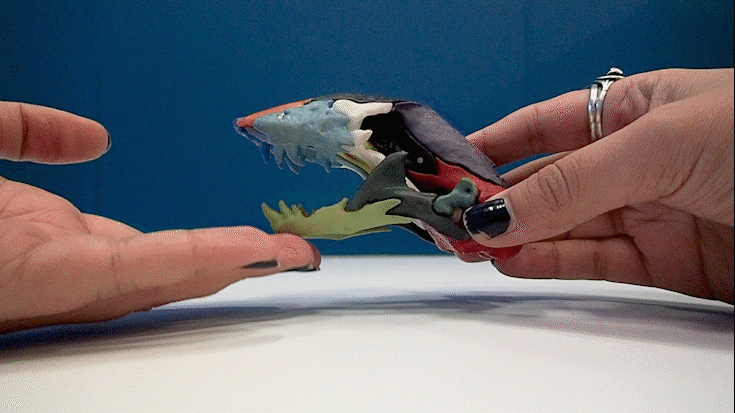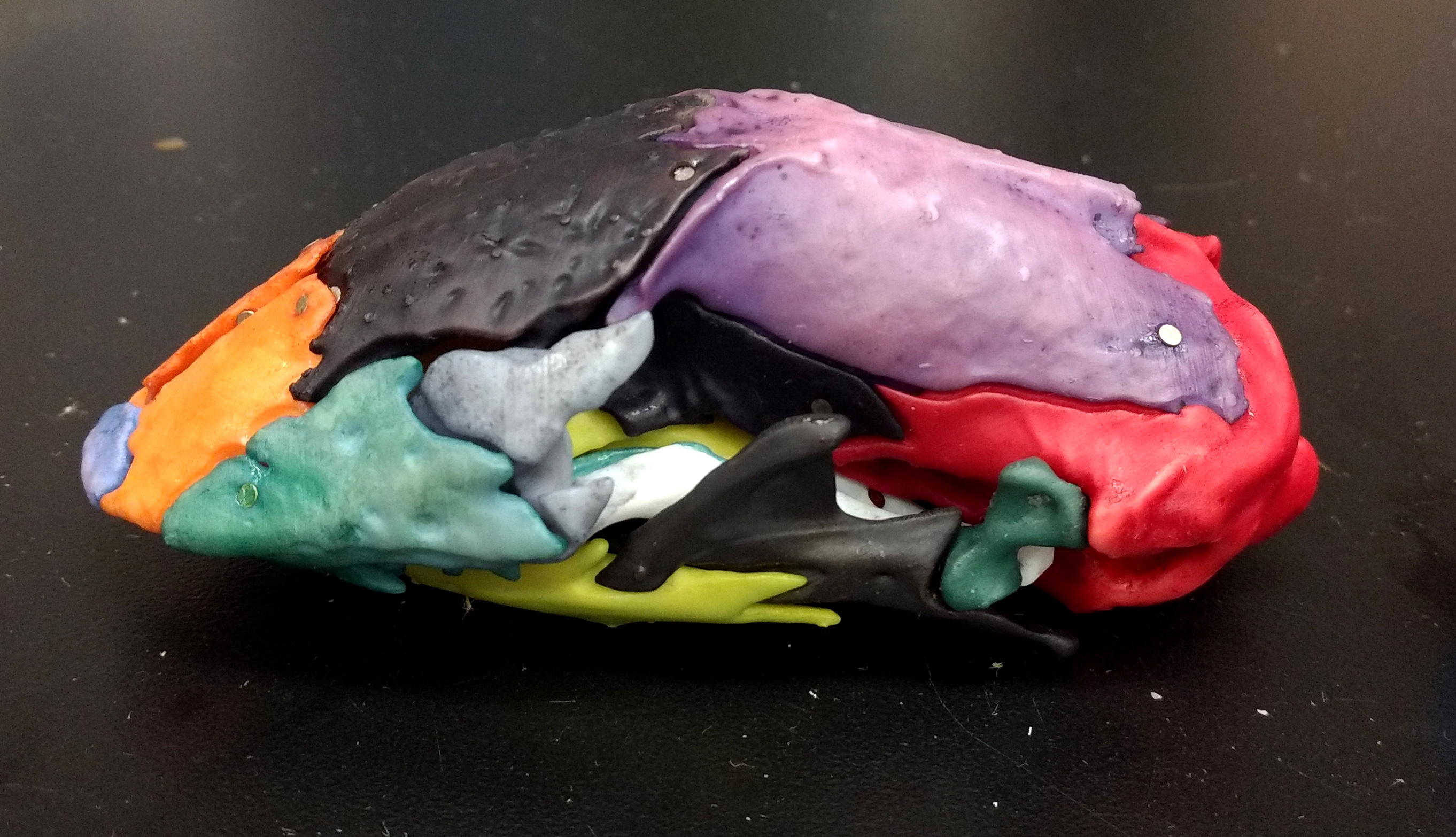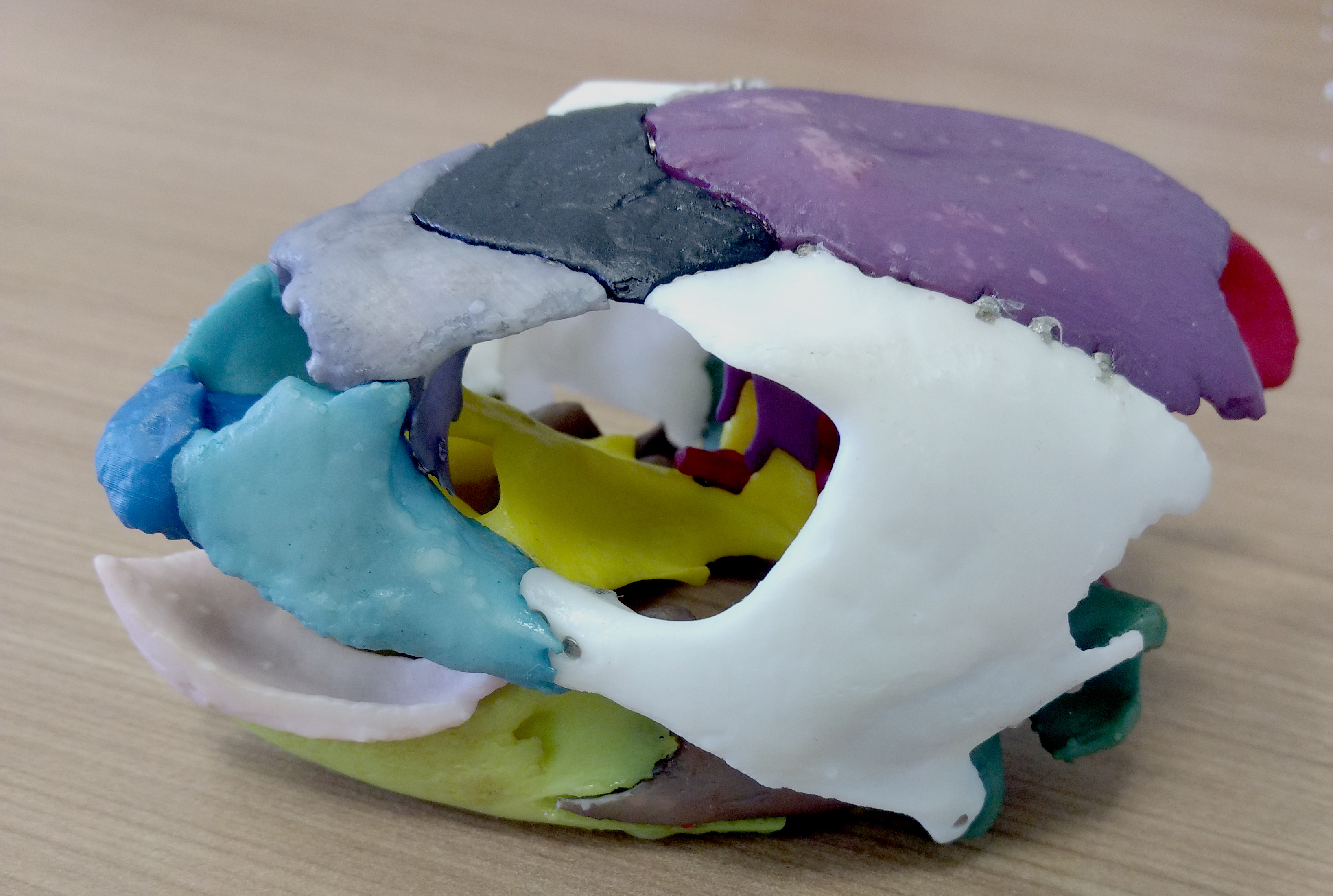3D Skull Puzzles
Using the fun of puzzles to teach anatomy
Research with living organisms lends itself to science communication and public engagement. With easier access to high-resolution 3D visualizations of museum specimens (e.g. Morphosource.org, Sketchfab.com), comes opportunities to reimagine the way we approach outreach and teaching organismal biology. Using 3D visualization software, it is possible to separate homologous elements into individual 3D files and print and color them individually. Using these prints, as well as magnets, Velcro, and tabs to connect the pieces, it is possible to create anatomically-correct puzzles for use in the classroom and public spheres. Puzzles are easy to approach, provide hands-on experience, and can demonstrate complex problems in an engaging way.

In an ongoing collaboration with Amber L. Singh, a graduate student at San Jose State University, and David Blackburn, we are building a series of anatomically-accurate skull puzzles for a variety or organisms including reptiles, amphibians, mammals, fishes, and birds. We have already created two puzzles, which have been a great asset in both collegiate and public outreach learning environments.


We are currently drafting a manuscript that would outline to other educators our methods of creating these puzzles, with tutorials in the form of images and videos. The future publication would also include free download of the templates used for the models we created online for public and educational use.

Collaborators: Amber L. Singh | David C. Blackburn